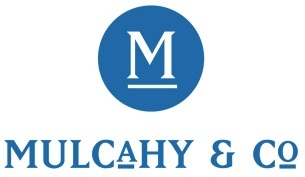Rain triggers biggest jump in rural commodities since mid-2016
- By: "Farm Tender" News
- Hay & Fodder News
- Feb 12, 2020
- 862 views
- Share

This article is bought to you by Mulcahy & Co Agri Solutions.
By Neil Findlay - Agribusiness Customer Executive, National Australia Bank
The NAB Rural Commodities Index recorded its largest monthly rise since mid-2016, amid severe bushfires and the outbreak of the novel coronavirus.
The Index rose 4.6 per cent on a national basis following good January rainfall in some key production areas, and the corresponding uplift in livestock markets.
The effect of the bushfires is severe and ongoing, but the agricultural impact has been predominantly concentrated to dairy regions in southern NSW, grazing in East Gippsland, Northern Victoria, Southern NSW and South Australia, and a number of wine regions.
As a result, the fires are unlikely to have materially impacted national agricultural production.
In terms of the recent coronavirus outbreak, we see two possible implications for Australian agriculture: lower demand, and logistical problems moving product to and within China.
Around a quarter of our total agricultural exports go to China, and with the majority of these shipped, getting product to market may become challenging.
There are already reports of offloading and distribution issues, and while Chinese wholesale meat prices have increased since the virus outbreak, logistical issues could impact strong processor demand for finished cattle in Australia.
Australian rock lobster exports have been entirely cut off, and any other products moved by air freight are also likely to encounter logistical issues.
Despite coronavirus concerns, livestock prices surged in response to average or above average January rain in key production areas.
The Eastern Young Cattle Indicator reached 623c/kg. While this is the highest price since June 2017 and around 100c below the 2016 record, we are cautious about calling a recovery in cattle prices until there is sustained follow up rain.
#FarmTender2020 - Focus on Farming Systems - June 5th, Bendigo, Vic

Tickets available now - click here
Lamb has also received a boost. The National Trade Lamb Indicator sits at 811c/kg and we expect to see continued upside due to drought-constrained supply.
The Eastern Market Indicator was sitting at $15.77/kg at the end of January. This is an improvement, but our dependence on Chinese demand does leave the wool price exposed to the impacts of coronavirus, and on balance we have wool price risk weighted on the downside.
Likewise, concerns about coronavirus put a dent in recent Global Dairy Trade auction results, which fell 4.7 per cent in USD terms in February.
Australian grain continues to trade well above international benchmarks, and feed prices remain high by world standards. Our feed grain price index averaged $312/t in January, up 4.3 per cent on December but 13.6 per cent lower than a year ago.
Following dismal yields this season, we don’t see much downside here until there is a good break.
Challenges remain for summer crops, with water allocations in the Murray Darling Basin practically non-existent in cotton production regions.
While cotton prices were well below peak in AUD terms at $577/bale in January, price is not the problem and good rain would see good returns for growers.
Having all but missed the winter crop, some northern NSW and QLD grain growers have received enough rain to plant a late sorghum crop, but total crop size is likely to be below average. https://business.nab.com.au/nab-rural-commodities-wrap-february-2020-38343/
Ad - Mulcahy & Co Agri Solutions provides a wide range of Farm Financial Services, they make sure you get results from all your hard work - Ad










Share Ag News Via